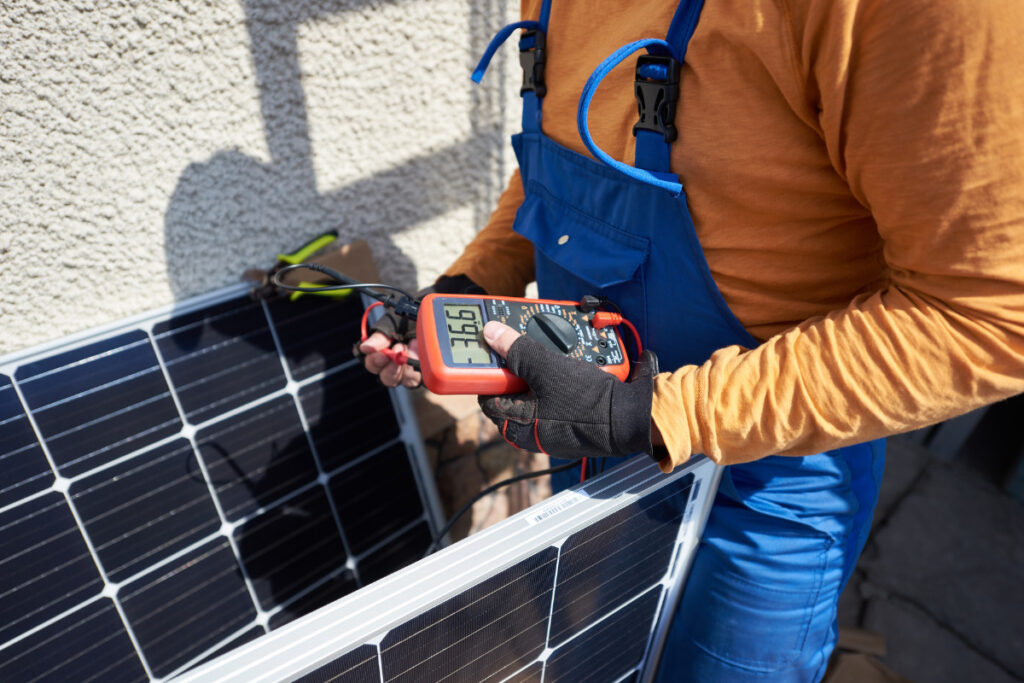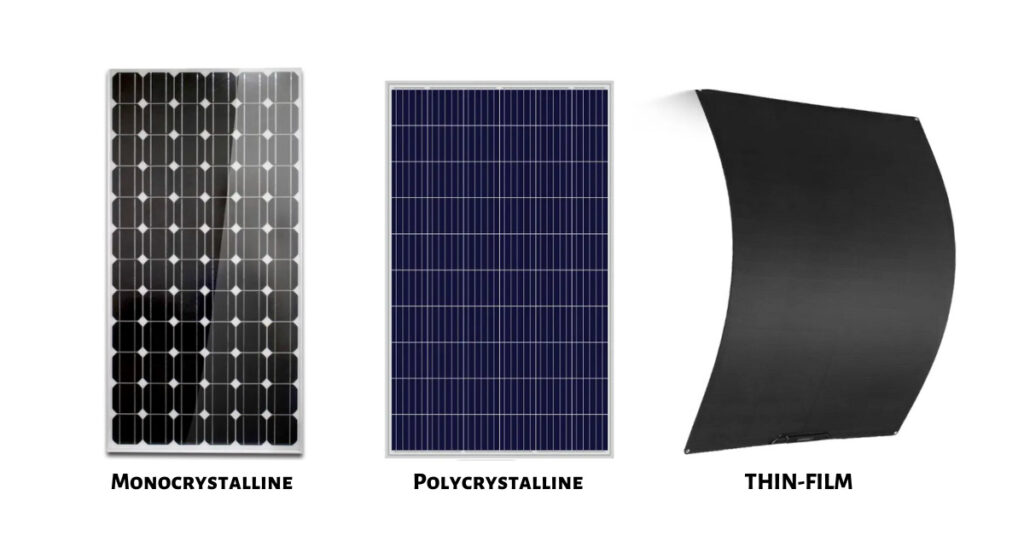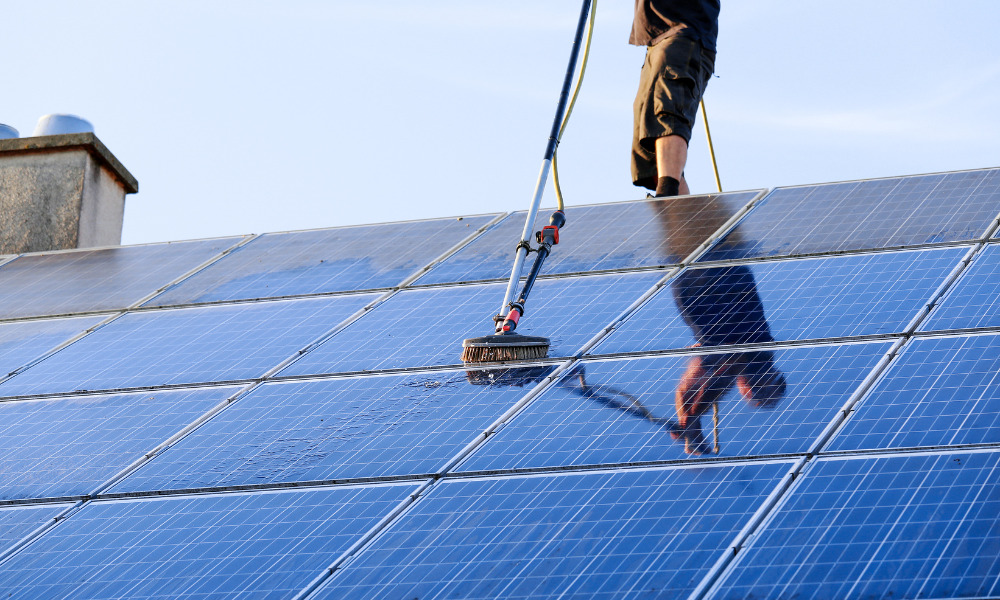Introduction
Solar panels have become a popular renewable energy solution for homeowners and businesses looking to reduce their carbon footprint, save on electricity bills, and contribute to a cleaner environment. But how long is the lifespan of solar panels?
In this blog post, we’ll dive into the factors that affect the lifespan of solar panels, examine different types of photovoltaic cells, and explore ways to extend the life of your investment.
Understanding the longevity of solar panels is essential when making informed decisions about implementing this sustainable energy source.
| Key Takeaways |
|---|
| The quality of materials, manufacturing process, exposure to environmental factors, maintenance and upkeep, and frequency of usage all affect the lifespan of solar panels. |
| Monocrystalline and polycrystalline panels have an average lifespan of 25-30 years with an annual degradation rate of 0.8%, while thin-film panels typically last 10-25 years with a degradation rate of 1-2% per year. |
| Regular cleaning and maintenance, proper installation and orientation, upgrading or replacing components as needed, choosing the right type and size of panel, and monitoring performance can extend the life span of solar panels. |
| By understanding these factors that affect lifespan we can make informed decisions about implementing sustainable energy sources such as solar power for our homes or businesses. |
Factors Affecting Solar Panel Lifespan
Several factors can affect the lifespan of solar panels, including the quality of materials used, the manufacturing process, exposure to environmental factors such as weather and sunlight intensity, proper maintenance and upkeep, and frequency of usage.
Quality Of Materials
The quality of materials used in solar panels plays a significant role in determining their overall lifespan. High-quality materials ensure better efficiency, durability, and resistance to environmental factors such as temperature fluctuations and ultraviolet (UV) radiation.
For example, premium-grade silicon is crucial in producing high-efficiency photovoltaic cells, while strong aluminum frames provide stability against wind and other external forces.
Additionally, ethylene-vinyl acetate or EVA encapsulation offers optimal protection for the PV cells from moisture and dirt accumulation.
Manufacturing Process
The quality of solar panels depends largely on the manufacturing process. There are many factors to consider, including high-quality materials and precise assembly techniques.
Reputable manufacturers follow stringent guidelines to ensure each panel meets industry durability, efficiency, and longevity standards. Quality control is essential from start to finish, including sourcing raw materials, producing cells with minimal defects, and laminating the panel layers together without causing damage or degradation.
Exposure To Environmental Factors
Solar panels are designed to withstand environmental factors such as extreme temperatures, rain, hail, and wind. However, prolonged exposure to these elements can cause wear and tear on the panels over time.
Moreover, debris like dirt and leaves accumulating on the surface of solar panels could impact their efficiency and reduce their lifespan. It’s essential to clean your solar panels regularly to prevent this from happening.
Choosing the right location when installing solar systems is also critical since it will determine how much exposure they receive from natural elements. Installing them in areas with minimal shade will maximize exposure to sunlight and extend their lifespan.

Maintenance And Upkeep
Proper maintenance and upkeep are crucial in extending the lifespan of solar panels. Simple tasks like cleaning the surface of your solar panels can significantly improve their efficiency and output.
Dirt, dust, bird droppings, and other pollutants can accumulate on the surface of your panels, affecting their ability to absorb sunlight.
Another important aspect of upkeep is monitoring your system’s performance regularly. Paying attention to changes in energy output or unusual noises from your equipment can alert you to potential problems before they become severe.
By taking simple steps like regular cleaning, monitoring performance, and seeking professional help, you can ensure that your solar panel system lasts well beyond its expected lifespan while keeping energy costs low for years.
Frequency Of Usage
The frequency of usage is another important factor that can affect the lifespan of solar panels. Generally, solar panels are designed to be used for a good portion of the day, from around 9 am to 3 pm, when the sun is at its highest point.
Overusing your solar panels outside this optimal period can reduce their longevity. For example, if you have a large family that consumes a lot of electricity and uses appliances such as air conditioners or heaters extensively throughout the day and night, it may strain your system and reduce its lifespan.
Average Lifespan Of Different Types Of Solar Panels
Monocrystalline, polycrystalline, and thin film solar panels typically have an average lifespan of 25-30 years.
Monocrystalline
These solar panel types are made from a single silicon crystal and have the highest efficiency in converting sunlight into electricity. They are easily recognizable by their dark appearance and rounded edges.
Monocrystalline solar panels have an average lifespan of 25 to 30 years, comparable to other solar panels.
Monocrystalline panels can maintain their output even in low light conditions, unlike polycrystalline or thin-film solar panels. They also take up less space while producing more energy per square foot than other types, making them popular among homeowners who want maximum power production in limited space.
Polycrystalline
Polycrystalline solar panels are made from multiple silicon crystals, giving them a unique appearance with a blue color. These panels are generally less expensive to manufacture than monocrystalline ones and have an average lifespan of 25 years or more.
One of the main advantages of polycrystalline panels is their durability. They can withstand harsh environmental conditions such as extreme temperatures, high winds, and heavy snow loads.
Additionally, manufacturers offer warranties for up to 25 years on these types of solar panels.

Thin Film
Compared to traditional crystalline solar panels, thin-film solar panels are made by depositing a thin layer of photovoltaic material onto a substrate. This makes them lightweight and flexible, allowing for more versatility in design and installation options.
While they may not be as efficient as other types of solar cells, their lower cost and increased flexibility make them an appealing option for certain applications, such as rooftop installations where weight is a concern.
According to industry standards and warranties, thin-film solar panels usually have performance guarantees of around 80% after 20-25 years of usage. This means that their efficiency levels decline less over time than some other types of PV cells due to the nature of their materials.
Industry Standards And Warranties
Most reputable solar panel manufacturers offer warranties for 25 years or more, the industry standard for most solar panels’ lifespans. These warranties cover production and performance issues, assuring buyers that their panels will meet certain output levels over time.
It’s also worth comparing the durability of different types of solar panels before making a purchase decision. Monocrystalline panels are known for being the most durable and having long lifespans, while thin-film panels may degrade faster due to their construction materials.
Comparing Their Durability
When it comes to the durability of various types of solar panels, noticeable differences can impact their overall lifespan. The following table highlights the key characteristics of monocrystalline, polycrystalline, and thin-film solar panels, making it easier to compare their durability.
| Type of Solar Panel | Material Quality | Manufacturing Process | Average Lifespan | Annual Degradation Rate |
|---|---|---|---|---|
| Monocrystalline | High quality, made from single crystal silicon | Czochralski process, resulting in high efficiency | 25 - 30 years | 0.8% |
| Polycrystalline | Good quality, made from multiple crystal silicon | Cast silicon process, lower efficiency than monocrystalline | 25 - 30 years | 0.8% |
| Thin Film | Lower quality, made from various materials such as amorphous silicon, cadmium telluride, or copper indium gallium selenide | Deposition of materials on a substrate, lower efficiency than crystalline panels | 10 - 25 years | 1 - 2% |
While monocrystalline and polycrystalline panels have a similar lifespan and degradation rate, their durability primarily depends on the quality of materials and manufacturing processes. Thin-film panels, on the other hand, tend to have a shorter lifespan and higher degradation rate due to their lower material quality and different manufacturing process. By understanding these differences, you can decide which type of solar panel best suits your needs and requirements.
How To Extend The Lifespan Of Your Solar Panels
Regular cleaning and maintenance, proper installation and orientation, upgrading or replacing components as needed, choosing the right solar panel size and type, and monitoring performance are all ways to extend the lifespan of your solar panels.
Regular Cleaning And Maintenance
Basic maintenance is essential for prolonging the life of solar panels. Here are some tips for regular cleaning and maintenance:
- Clean your solar panels regularly to remove dirt, debris, and any other buildup that can block sunlight from reaching the cells.
- Use a soft brush or sponge to avoid scratching the surface of your panels.
- Avoid harsh chemicals or abrasive materials that could damage your panels or reduce efficiency.
- Check for any signs of damage or wear and tear on your panels, such as cracks or missing pieces.
- Ensure all wiring and connections are secure and insulated to prevent electrical problems.
- Monitor your solar panel system’s performance regularly to identify any issues needing repairs or upgrades.
By following these essential maintenance tips, you can help ensure that your solar panels work efficiently for years and maximize their lifespan. Remember, regular care is vital in keeping them in good working condition and extending their longevity.
Proper Installation And Orientation
Proper installation and orientation are crucial factors in extending the lifespan of your solar panels. Installation should be done by a professional with experience in handling solar panels.
The positioning of the panel should also be well thought out to maximize exposure to sunlight throughout the day.
The angle and direction of the panel must also align with your location’s latitude and weather patterns, as well as avoid any shading from trees or buildings that may obstruct sunlight.

Upgrading Or Replacing Components As Needed
Upgrading or replacing components as needed is essential to maintaining your solar panels and extending their lifespan. As technology improves, newer and more efficient components become available that can improve your solar system’s performance.
For example, replacing older inverters with newer ones can increase energy production and reduce maintenance costs.
It’s also crucial to promptly replace any damaged or faulty components to prevent them from affecting the overall performance of your solar system. Replacing a single defective panel or inverter can significantly increase the efficiency and output of your entire system.
By keeping up with regular monitoring and maintenance, you’ll be able to identify which parts need replacement early on before they cause significant damage to other components.
Choosing The Right Solar Panel Size And Type
When choosing the right solar panel size and type, there are a few factors to consider. The first thing you’ll want to think about is your energy needs.
Another consideration is the location of your panels. If you live in an area with shade or cloudy weather, thin film solar panels may be a better option as they can generate power even under low light conditions.
Ultimately, it’s important to work with an experienced solar installer who can assess your specific situation and help guide you towards the most appropriate panel size and type for your needs.
Monitoring Performance And Seeking Professional Help
It’s important to keep an eye on your solar panels’ performance over time to identify any issues that may arise. Monitoring can be done manually or through the use of software that tracks output levels and sends alerts when there is a drop in performance.
Regular maintenance and cleaning can help prevent issues from developing, but it’s always best to have a professional handle any necessary repairs or upgrades.
Conclusion: Understanding Solar Panel Lifespan Is Key To Making Informed Decisions
In summary, understanding the lifespan of solar panels is essential to making informed decisions about renewable energy sources, by knowing the factors that affect a solar panel’s lifespan and how long different panels typically last, you can choose the best options for your needs.
Proper maintenance and upkeep are crucial in extending your solar panels’ life span. With a longer lifespan, you can maximize your investment in clean energy while reducing your environmental impact.
![]()
Do you have questions on solar?
If you have more questions, contact DroneQuote. We frequently receive inquiries from homeowners who are interested in installing a solar energy system but are still deciding which type to purchase. Our role is to inform homeowners about the various solar panel options that meet their requirements. This is what distinguishes DroneQuote as a solar fiduciary. If you desire additional information about installing solar panels on your roof, visit our website, and we will provide you with straightforward answers.

FAQs
- How long do solar panels typically last?
Solar panels are designed to last for around 25-30 years. But their lifespan can vary depending on factors such as the materials’ quality, climate conditions, and maintenance practices.
- What are some common factors that can affect the lifespan of solar panels?
Several factors can impact the lifespan of solar panels, including temperature fluctuations, exposure to sunlight, and weather events such as storms or hail damage. Regular cleaning and professional inspections can also help maintain panel performance over time.
- Can a damaged or malfunctioning solar panel be repaired rather than replaced?
In some cases, repairing a damaged or malfunctioning panel may be possible. This can be done by replacing broken glass panes or fixing faulty wiring connections. However, depending on the extent of the damage, it may be more cost-effective in the long run to replace the panel instead.
- How does warranty coverage affect my investment in solar panels?
Warranty coverage is an important consideration when investing in solar panels. It provides assurance that your manufacturer will cover any defects or issues with your system for a specified period following installation. Before purchasing any equipment, ensure you have reviewed these warranties in full. Before signing the contract agreement, this will help you understand what’s included and excluded from coverage.

[…] investing in solar panels reduces your carbon footprint and contributes to a cleaner environment by utilizing renewable energy sources. Furthermore, taking […]